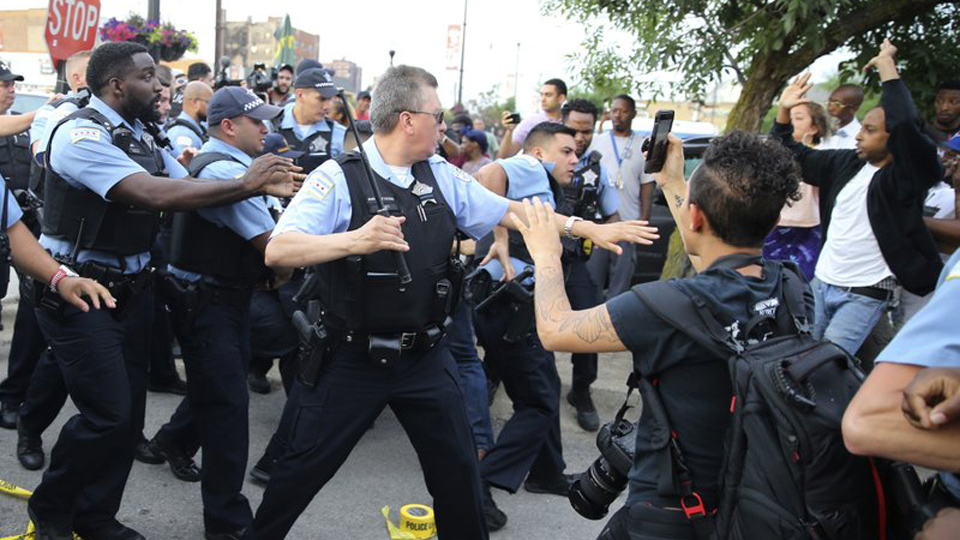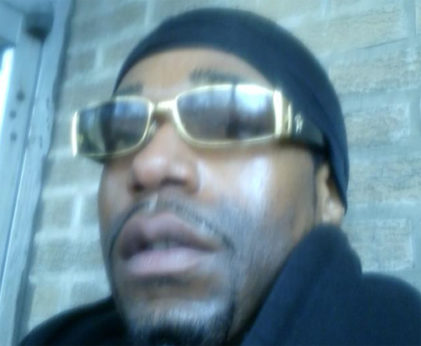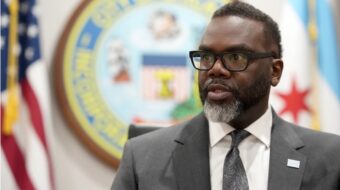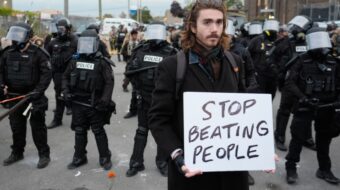
CHICAGO—Community members here came head-to-head with police Saturday night after a Southside barber was shot and killed after an interaction with officers earlier that evening. Reports have identified the man as Harith Augustus, better known as “Snoop,” from the South Shore neighborhood. Following the shooting, protestors gathered on the corner of 71st and Jeffery, where the 37-year-old Augustus was shot.

According to reports, officers initially stopped Augustus because they saw “a man exhibiting characteristics of an armed person.” Body camera footage of the incident shows Augustus speaking to officers before two additional officers approached him from behind and reached out to grab him. The physical confrontation escalated and Augustus was shot in the back five times as he attempted to run away.
The video footage showed Augustus was in possession of a firearm, located in a holster on his hip. Chicago police are now saying Augustus did have a legal FOID (Firearm Owners Identification) card, but not a conceal carry permit.
In response, Black Lives Matter put out a statement condemning the actions of the Chicago Police Department and calling for accountability measures to be enacted. In their press release, BLM-Chicago stated that it did not matter whether or not Augustus was in possession of a permit to carry a firearm because merely possessing the gun did not justify his murder. “The officers’ escalations and initial uses of force during the interaction with Harith reveal how these laws are selectively applied by law enforcement against predominantly poor Black communities where criminality is always already assumed.”
In the days following the shooting, demonstrators have returned to the South Shore neighborhood in solidarity with the community members there. Organizations such as Black Lives Matter Chicago and Chicago Alliance Against Racist and Political Repression organized a Justice for Harith “Snoop” Rally Monday afternoon with over 100 attendees present.
Ariel Atkins, an active member of both the Black Lives Matters-Chicago chapter and the Chicago Alliance, was present at Monday’s protest and said that there were lots of emotions from local residents who felt as though their voices were not being centered. “People were frustrated,” said Atkins. “This is a community of black folks that are not often heard, so when a hundred-something people show up that have never set foot in these places, it creates a lot of tension.”
Chicago’s South Shore neighborhood has a focus of conversation since Chicago Mayor Rahm Emanuel announced in 2015 that the Barack Obama Presidential Center would be built in Jackson Park, wedged between the Hyde Park, Woodlawn, and South Shore neighborhoods on the city’s south lakefront. Chicago’s lower income neighborhoods have historically suffered as gentrification has led to the increased displacement of Black and brown residents. This is in part why Atkins believes there is so much hesitancy from community members to align themselves with outside organizers. “Five years ago,” she said, “you wouldn’t have seen a single white face out there.”
The gentrification of economically pillaged neighborhoods is statistically correlated to an increase in police presence, which, consequently, contributes to the violence that black communities experience. In the case of Harith Augustus, members of the Southside community are now being accosted and profiled for activity that used to be commonplace in neighborhoods like South Shore. “Two cops came up and escalated the situation,” said Atkins. “Why is that the case? Because someone was selling loosies?”
The heightened criminalization of black bodies under gentrification is not new. Previously predominant black neighborhoods, like New York City’s Harlem, are now seeing a rise in police activity as redevelopment picks up pace. Residents who claim that they have been playing dominoes on the street for decades are now being booted from their normal playing spots due to the influx of white residents moving in. This is, in part, because white people weaponize their access to police—as evidenced by numerous viral videos online recently.
In Chicago, the ongoing issue of gentrification is not only displacing locals; it’s also putting them in physical danger. With Emanuel publicly backing a proposed $95 million police training academy in West Garfield Park, it seems the city only has plans to further the funding of police forces.
Organizers are saying that in order to show real solidarity the city needs to listen to the needs of the community and start allocating funding towards places where it is actually needed, like education and employment. In order to do this effectively, there need to be established relationships among those that are most directly impacted by the socio-economic displacement. “Don’t just show up and pass up flyers,” Atkins told her fellow organizers. “We have to be present. Start canvassing, and talking about CPAC [Civilian Police Accountability Council], building a rapport in the community—that’s the big thing.”
As of now, community members are demanding that the names of the police officers involved in Augustus’s death be released, and many argue they should be immediately charged. This includes the white female cop who initially reached out and grabbed Augusts, as well as the white male cop who shot him as he was fleeing. They are also asking that the charges against four people arrested during the protests afterwards be dropped. In the meantime, Chicago’s South Shore neighborhood awaits the disclosure of further information, and the city remains in a state of unrest.
Like free stuff? So do we. Here at People’s World, we believe strongly in the mission of keeping the labor and democratic movements informed so they are prepared for the struggle. But we need your help. While our content is free for readers (something we are proud of) it takes money — a lot of it — to produce and cover the stories you see in our pages. Only you, our readers and supporters, can keep us going. Only you can make sure we keep the news that matters free of paywalls and advertisements. If you enjoy reading People’s World and the stories we bring you, support our work by becoming a $5 monthly sustainer today.










